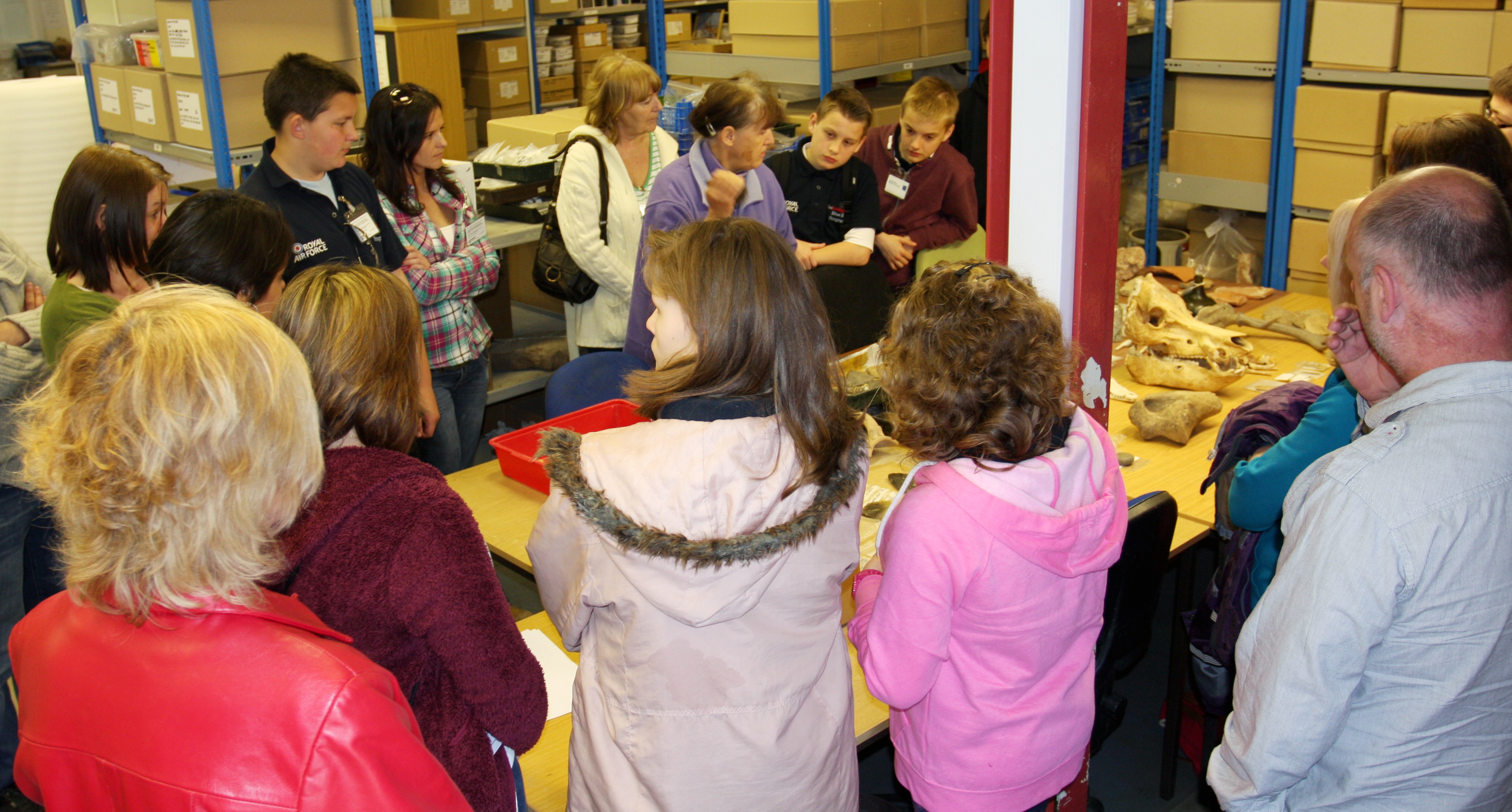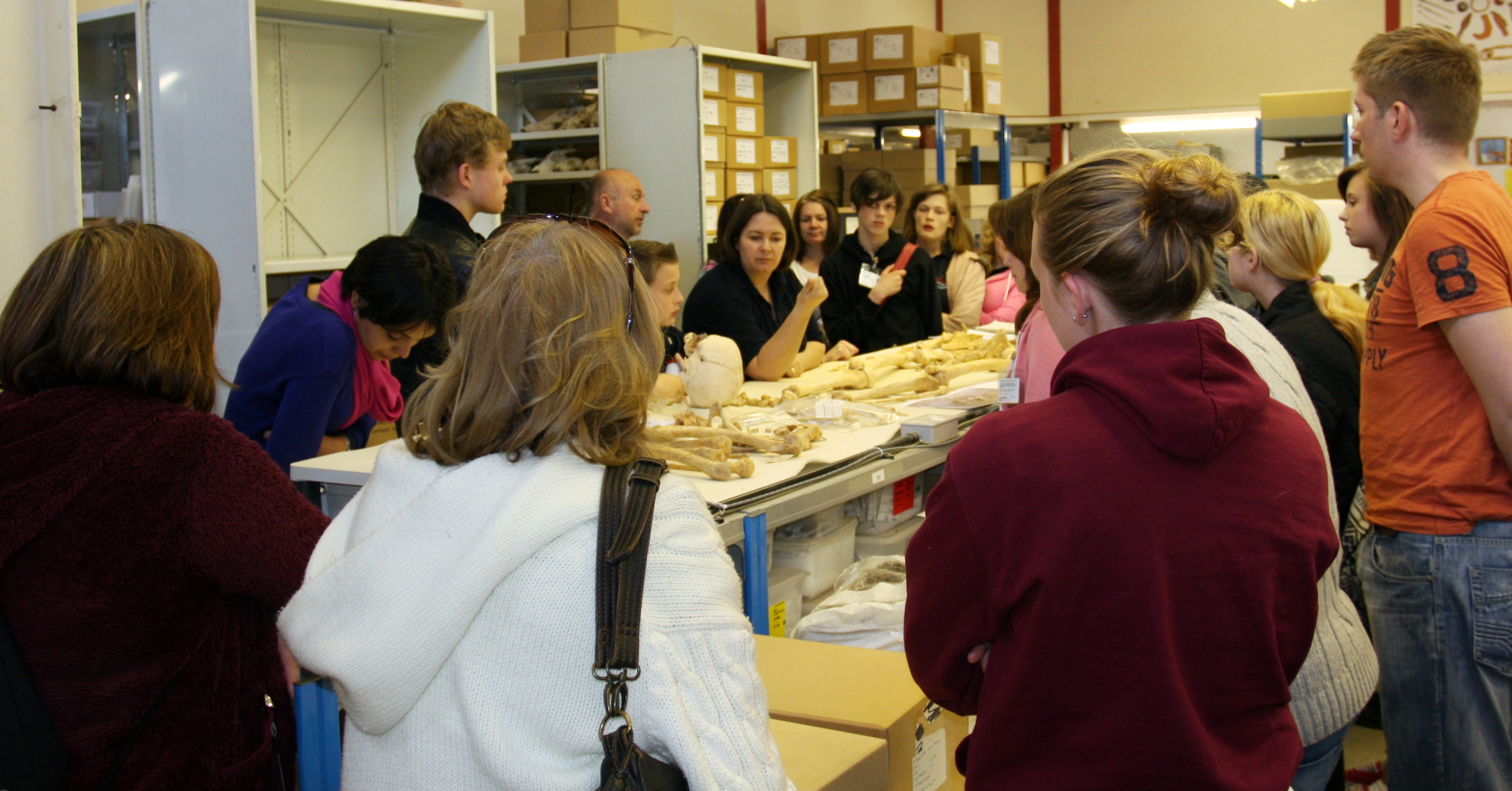2nd May 2013 Inspiration day at Wessex Archaeology HQ
On a sunny Thursday 2nd May the students participating in the Jon Egging Trust Blue Skies programme (Bournemouth) visited the Salisbury office to learn about what archaeology is, who archaeologists are, and how such a diverse range of people and skills come together to work towards a successful outcome.
Kirsten Dinwiddy, Angus Forshaw, Steve Winterton, Sue Nelson and Phil Harding all contributed, explaining about their roles within the company, and discussing the variety of evidence we gather in order to better understand the lives of those who lived in the past.

The session kicked-off with an overview and presentation by Angus Forshaw who involved the students in identifying features on aerial photographs and geophysical surveys.
Steve Winterton explained how he became involved in archaeology and Operation Nightingale. A visit to the environmental department followed, where the group saw how soil samples are processed, what may be found, and what information specialists can glean from such evidence.

Sue Nelson asked the participants to try to identify different artefacts and think about how they might have been used in the past. Next came the pottery sequence challenge where, as is often the case, there was some amazement when they learned that the finely finished sherd of samian pottery was around 2000 years old.

The skeleton of a late Romano-British man from Boscombe Down was of great interest, particularly as he had evidently rarely brushed his teeth. Kirsten Dinwiddy demonstrated the ways in which the age, sex and sometimes lifestyle may be assessed from human bones, whilst the participants considered and questioned the manner in which the remains were treated in the past.
The final session of the day comprised a flint knapping demonstration by Phil Harding, who managed to mesmerize the teenagers (and adults) by talking about the connection he felt with the past through knapping flint. His comments made people think about the differences and similarities between modern and stone age everyday activities. He produced a number of tools including a large axe.

All those involved were impressed by how focused the students were, and by their interesting, thought provoking questions. From their debrief evaluations it seems that all the students had learnt something new and left feeling happy. The same could be said of the Wessex staff too! Thank you to everyone for their support and advice.
We now look forward to a day at the East Chisenbury Iron Age midden with the Operation Nightingale team.